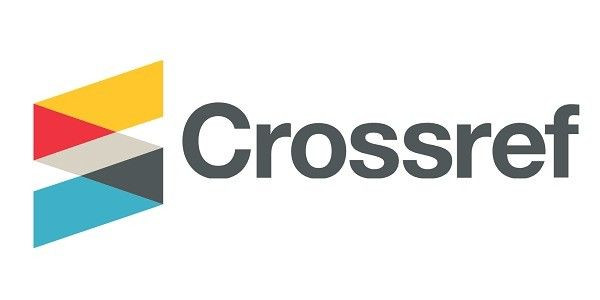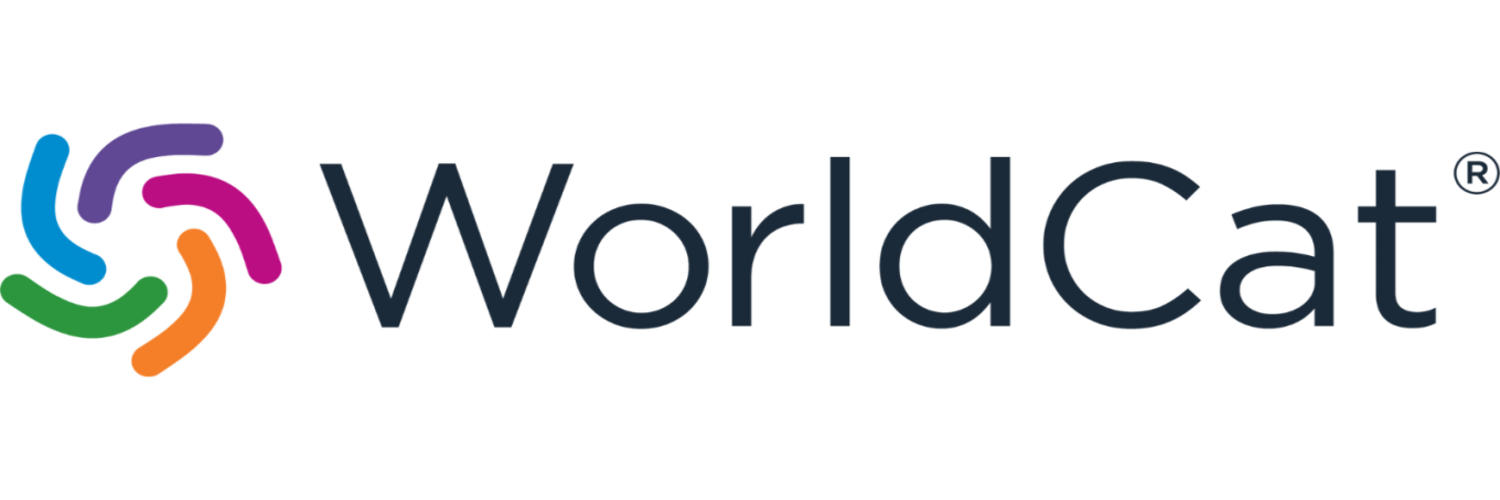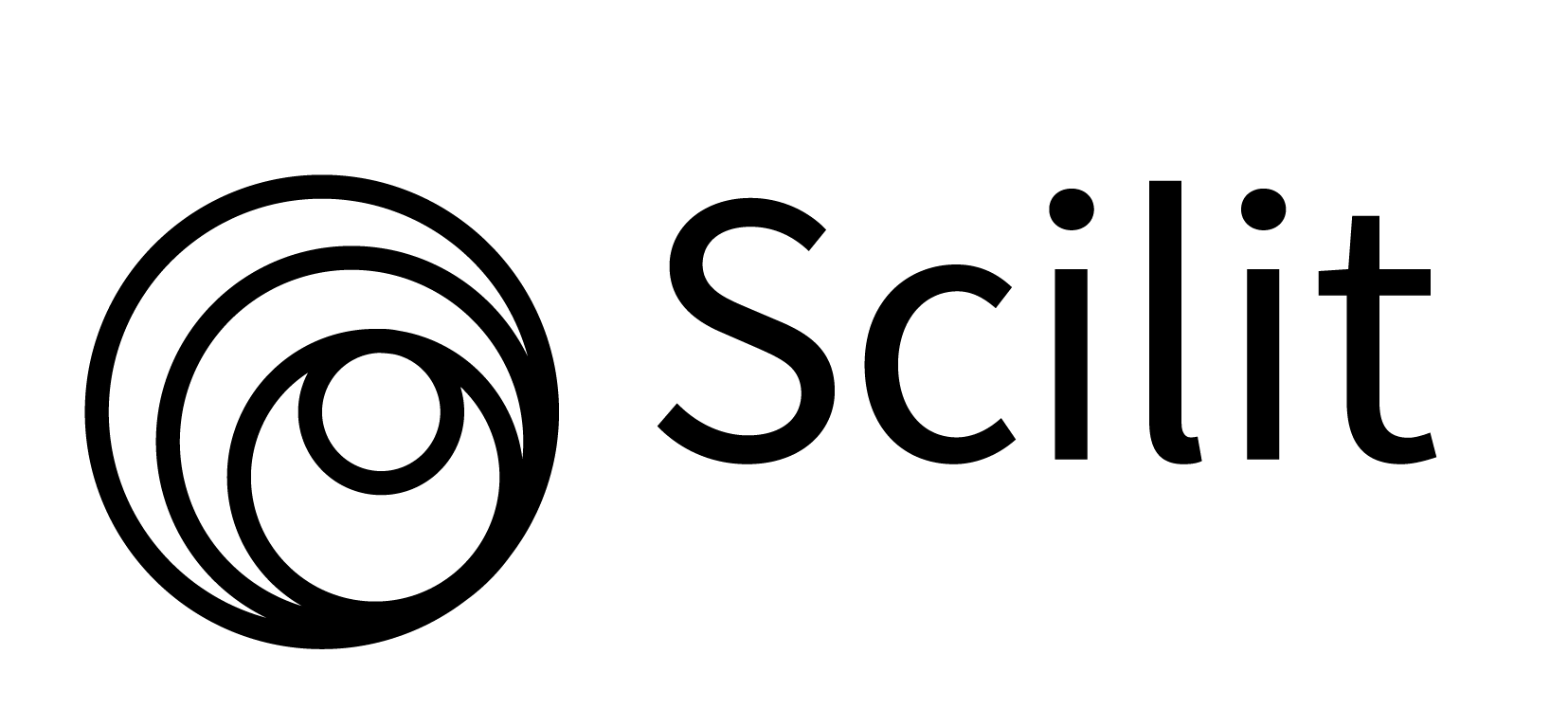Review Article
The Ethical Frontier: AI in Medicine and Dentistry
- Dr. Patrik Kennet
Corresponding author: Patrik Kennet, Massachusetts Institute of Technology, Massachusetts Ave, Cambridge, MA 02139, United States.
Volume: 2
Issue: 2
Article Information
Article Type : Review Article
Citation : Patrik Kennet, Soren Falkner. The Ethical Frontier: AI in Medicine and Dentistry. Journal of Medical and Clinical Case Reports 2(2). https://doi.org/10.61615/JMCCR/2025/MAY027140516
Copyright: © 2025 Patrik Kennet. This is an open-access article distributed under the terms of the Creative Commons Attribution License, which permits unrestricted use, distribution, and reproduction in any medium, provided the original author and source are credited.
DOI: https://doi.org/10.61615/JMCCR/2025/MAY027140516
Publication History
Received Date
07 Apr ,2025
Accepted Date
22 Apr ,2025
Published Date
16 May ,2025
Abstract
Artificial intelligence (AI) is rapidly transforming the landscape of medicine and dentistry, offering unprecedented opportunities for enhanced diagnostics, personalized treatments, and improved patient outcomes. However, the integration of AI into these critical fields also raises complex ethical considerations. This paper explores the ethical frontier of AI in medicine and dentistry, examining key challenges such as algorithmic bias, data privacy, informed consent, professional autonomy, and the potential impact on the patient-clinician relationship. We analyze the current state of AI applications, discuss emerging ethical frameworks, and propose recommendations for responsible innovation and implementation. By navigating these ethical complexities, we can ensure that AI serves as a powerful tool for advancing healthcare while upholding fundamental principles of justice, beneficence, and patient well-being.
Keywords: Artificial intelligence (AI), medicine, dentistry, ethics, algorithmic bias, data privacy, informed consent, professional autonomy, patient-clinician relationship, healthcare innovation, medical technology, dental technology, responsible AI, healthcare ethics, medical informatics.
►The Ethical Frontier: AI in Medicine and Dentistry
Patrik Kennet1*, Soren Falkner2
1Massachusetts Institute of Technology, Massachusetts Ave, Cambridge, MA 02139, United States.
2Vienna University of Technology, Faculty of Computer Engineering, Vienna, Austria.
Introduction
The dawn of the 21st century has ushered in an era of unprecedented technological advancement, with artificial intelligence (AI) standing at the forefront of this transformative wave. Once relegated to the realm of science fiction, AI [1-19] is now rapidly permeating various sectors of society, including the critical domains of medicine and dentistry. The potential of AI to revolutionize healthcare is immense, offering the promise of enhanced diagnostics, personalized treatment plans, and improved patient outcomes. From sophisticated image analysis for detecting subtle pathologies to predictive algorithms for anticipating disease progression, AI holds the key to unlocking new frontiers in medical and dental practice. However, this rapid integration of AI into healthcare also presents a complex web of ethical considerations that demand careful scrutiny.
The allure of AI lies in its ability to process vast amounts of data with unparalleled speed and accuracy, identifying patterns and insights that may elude human clinicians. In medicine, AI-powered systems are being developed to analyze medical images, predict patient risk, and even assist in surgical procedures. In dentistry, AI is being employed for tasks such as automated caries detection, orthodontic treatment planning, and the design of dental prostheses. These applications have the potential to significantly improve the efficiency and effectiveness of healthcare delivery, potentially leading to earlier diagnoses, more precise interventions, and better patient experiences.
However, the ethical implications of these advancements are profound. Unlike traditional medical technologies, AI [20-32] systems often operate as "black boxes," where the underlying algorithms and decision-making processes are opaque. This lack of transparency raises concerns about algorithmic bias, where AI models may perpetuate or even amplify existing societal inequalities. For example, if an AI algorithm is trained on biased datasets, it may produce discriminatory outcomes, leading to disparities in healthcare access and quality. Furthermore, the reliance on AI may erode the vital human element of patient care, potentially diminishing the crucial role of empathy, intuition, and clinical judgment.
Another critical ethical consideration is data privacy. The implementation of AI in medicine and dentistry necessitates the collection, storage, and analysis of vast amounts of sensitive patient data. This raises concerns about the security and confidentiality of personal health information, particularly in an era of increasing cyber threats. Ensuring robust data protection measures and obtaining informed consent from patients regarding the use of their data is paramount. The ethical framework surrounding informed consent must be re-evaluated to account for the complexities of AI-driven decision-making, ensuring that patients understand the implications of their data being used in algorithmic processes.
Moreover, the integration of AI challenges the traditional boundaries of professional autonomy. As AI systems become more sophisticated, they may assume a greater role in clinical decision-making, potentially altering the dynamics between clinicians and patients. The question arises: to what extent should clinicians rely on AI recommendations, and how can they maintain their professional judgment and responsibility? The potential for AI to automate certain tasks also raises concerns about the future of healthcare professions and the need for new models of training and education. It is crucial to develop ethical guidelines that define the appropriate roles and responsibilities of AI and clinicians in the delivery of healthcare.
This paper aims to delve into the ethical frontier of AI in medicine and dentistry, exploring the multifaceted challenges and opportunities presented by this transformative technology. By analyzing the current state of AI applications, examining emerging ethical frameworks, and proposing recommendations for responsible innovation and implementation, we seek to contribute to a nuanced understanding of the ethical considerations surrounding AI in healthcare. Ultimately, the goal is to ensure that AI [33-49] serves as a powerful tool for advancing medical and dental practice while upholding fundamental principles of justice, beneficence, and patient well-being. This exploration is not merely an academic exercise, but a critical step in shaping a future where AI enhances, rather than diminishes, the human-centered core of healthcare.
Challenges
It's crucial to acknowledge the challenges that accompany the integration of AI [50-63] into medicine and dentistry. Here's a breakdown of some key areas of concern:
1. Algorithmic Bias:
- Data disparities
- AI algorithms are trained on data, and if that data reflects existing societal biases, the AI will perpetuate or even amplify those biases. This can lead to unequal treatment for different patient populations.
- For example, if an AI diagnostic tool is primarily trained on data from one demographic group, it may perform less accurately for other groups.
- "Black box" problem
- Many AI algorithms, particularly deep learning models, operate as "black boxes," meaning their decision-making processes are opaque. This lack of transparency makes it difficult to identify and correct biases.
2. Data Privacy and Security:
- Sensitive information:
- Medical and dental data are highly sensitive, and their collection, storage, and analysis raise significant privacy concerns.
- Cybersecurity risks
- The increasing digitalization of healthcare data makes it vulnerable to cyberattacks.
- Informed consent
- Obtaining meaningful informed consent for the use of AI in healthcare is complex, as patients may not fully understand how their data will be used.
3. Professional Autonomy and the Patient-Clinician Relationship:
- Reliance on AI
- Over-reliance on AI could diminish clinicians' professional judgment and intuition.
- Changes in roles
- The roles of clinicians may shift as AI takes on more tasks, potentially altering the patient-clinician relationship.
- Maintaining human connection
- It is vital to ensure that the introduction of AI does not erode the vital human aspects of healthcare, such as empathy and compassionate care.
4. Regulatory and Legal Challenges:
- Liability
- Determining liability in cases of AI-related medical errors is complex.
- Lack of clear guidelines
- Regulatory frameworks for AI in healthcare are still evolving, leading to uncertainty.
- Rapid technological advancement
- The speed of AI development often outpaces the development of regulations.
5. Implementation and Accessibility:
- Cost
- The cost of AI technologies [64-80] can be a barrier to their widespread adoption.
- Digital divide
- Ensuring equitable access to AI-powered healthcare for all populations is essential.
- Training and education
- Healthcare professionals need adequate training to use AI [81-97] tools effectively.
Advantages and Disadvantages
When considering the role of AI in medicine and dentistry, it's essential to weigh both the potential advantages and the inherent disadvantages. Here's a breakdown:
Advantages
- Enhanced Diagnostic Accuracy
- AI algorithms can analyze medical images (X-rays, CT scans, MRIs) with greater precision, detecting subtle abnormalities that may be missed by the human eye.
- This can lead to earlier and more accurate diagnoses, improving patient outcomes.
- Personalized Treatment
- AI can analyze vast amounts of patient data to tailor treatment plans to individual needs, optimizing effectiveness and minimizing side effects.
- This is particularly valuable in fields like oncology and genomics.
- Increased Efficiency
- AI can automate repetitive tasks, such as data entry and image analysis, freeing up clinicians' time to focus on patient care.
- This can improve workflow efficiency and reduce healthcare costs.
- Predictive Analytics
- AI can identify patterns in patient data to predict the likelihood of future health problems, enabling proactive interventions.
- This can help prevent chronic diseases and improve population health.
- Improved Accessibility
- AI-powered telemedicine and remote monitoring [98-103] can expand access to healthcare for patients in underserved areas.
- AI can also aid in the analysis of information in real time, during operations, or dental procedures.
- Accelerated Research
- AI can process and analyze large datasets of medical research, accelerating the process of drug discovery and the development of new treatments.
Disadvantages
- Algorithmic Bias
- AI algorithms can perpetuate or amplify existing biases in the data they are trained on, leading to unequal treatment for certain patient populations.
- Data Privacy and Security
- The use of AI in healthcare requires the collection and storage of sensitive patient data, raising concerns about privacy and security breaches.
- Lack of Transparency
- Many AI algorithms operate as "black boxes," making it difficult to understand how they arrive at their decisions.
- This lack of transparency can erode trust and make it difficult to identify and correct errors.
- Professional Autonomy
- Over-reliance on AI could diminish clinicians' professional judgment and intuition.
- It's crucial to maintain a balance between AI-driven insights and human clinical expertise.
- Ethical Concerns
- The use of AI in healthcare raises ethical questions about informed consent, liability, and the potential for dehumanization of care.
- Implementation Costs
- The implementation of AI systems can be expensive, creating barriers to access, especially in less wealthy healthcare systems.
- Job Displacement
- The Automation of certain tasks could lead to job displacement for some healthcare workers.
Future Works
When considering future works related to the ethical implications of AI in medicine and dentistry, there's a wide range of avenues to explore. Here are some potential directions:
1. Development of Ethical Frameworks and Guidelines
- Standardized ethical guidelines:
- Research and development of comprehensive, internationally recognized ethical guidelines for the design, implementation, and use of AI in medicine and dentistry.
- Explainable AI (XAI) in healthcare:
- Focus on developing and implementing XAI techniques to increase the transparency and accountability of AI algorithms in clinical settings.
- Patient-centered ethical frameworks:
- Research on ethical frameworks that prioritize patient autonomy, informed consent, and the preservation of the patient-clinician relationship in the age of AI.
2. Addressing Algorithmic Bias and Ensuring Equity
- Bias detection and mitigation strategies:
- Development of robust methods for detecting and mitigating biases in AI algorithms used in healthcare.
- Diverse and representative datasets:
- Research on strategies for creating and utilizing diverse and representative datasets to train AI algorithms, ensuring equitable outcomes for all patient populations.
- Monitoring of AI performance in diverse populations:
- Development of systems to monitor the performance of AI algorithms in diverse patient populations, identifying and addressing any disparities in care.
3. Data Privacy, Security, and Governance
- Advanced data privacy technologies:
- Research on the development and implementation of advanced data privacy technologies, such as federated learning and differential privacy, to protect sensitive patient data.
- Regulatory frameworks for data governance:
- Development of clear and comprehensive regulatory frameworks for the collection, storage, and use of healthcare data in AI applications.
- Patient control over data:
- Research on systems that give the patient more control over their own data, and how it is used within AI systems.
4. The Evolving Role of Clinicians
- Curriculum development for AI literacy:
- Development of educational programs and curricula to equip healthcare professionals with the knowledge and skills needed to effectively use AI tools.
- Redefining the clinician-AI collaboration:
- Research on the evolving roles and responsibilities of clinicians in the age of AI, focusing on the development of collaborative models that leverage the strengths of both human and artificial intelligence.
- Maintaining the human element in AI-driven healthcare:
- Research on methods to preserve and enhance the human element of care, such as empathy and compassion, in the context of AI-driven healthcare.
5. Long-Term Impact and Societal Implications
- Impact on healthcare access and affordability:
- Research on the long-term impact of AI on healthcare access and affordability, particularly for underserved populations.
- The future of healthcare professions:
- Exploration of the future of healthcare professions in the age of AI, including the potential for job displacement and the need for new roles and skills.
- Public perception and trust in AI in healthcare:
- Research on public perception and trust in AI in healthcare, and the development of strategies to build trust and promote acceptance.
- AI and mental health:
- Research into the ethical use of AI for mental health diagnosis and treatment.
Conclusion
In conclusion, the integration of artificial intelligence into medicine and dentistry represents a paradigm shift with the potential to revolutionize healthcare delivery. While AI offers remarkable advantages in diagnostics, personalized treatment, and efficiency, it also presents a complex array of ethical challenges that demand careful consideration. The specter of algorithmic bias, the imperative to safeguard data privacy, the need to redefine professional autonomy, and the importance of preserving the human element of care are all critical factors that must be addressed to ensure responsible innovation.
The "black box" nature of many AI algorithms necessitates a concerted effort to develop explainable AI solutions, fostering transparency and trust. We must prioritize the creation of diverse and representative datasets to mitigate bias and ensure equitable outcomes for all patient populations. Robust regulatory frameworks and advanced data privacy technologies are essential for safeguarding sensitive patient information. Furthermore, educational programs and curricula must be developed to equip healthcare professionals with the skills needed to navigate the evolving landscape of AI-driven healthcare.
The future of AI in medicine and dentistry hinges on our ability to strike a balance between technological advancement and ethical responsibility. We must strive to create a healthcare ecosystem where AI serves as a powerful tool to augment, rather than replace, human clinical expertise. By prioritizing patient-centered care, fostering collaboration between clinicians and AI systems, and upholding fundamental ethical principles, we can harness the transformative potential of AI to improve patient outcomes and enhance the quality of healthcare for all.
-
- Dr Omid Panahi. (2019). Nanotechnology, Regenerative Medicine and Tissue Bioengineering. Scholars Press Academic Publishing. ISBN: 978-613-8-91908-7.
- Samira Zarei, Dr Omid Panahi, Dr NimaBahador. (2019). Antibacterial activity of aqueous extract of eucalyptus camaldulensis against Vibrio harveyi (PTCC1755) and Vibrio alginolyticus (MK641453.1). Saarbucken: LAP, Lambert Academic Publishing GmbH & Co.KG. ISBN: 978-620-0-48110-8.
- Samira Zarei, Dr Omid Panahi. (2019). Eucalyptus camaldulensis Extract as a Preventive to the Vibriosis, Scholars Press Academic Publishing. ISBN: 978-613-8- 91935-3.
- Panahi, O. (2024). Dental Implants & the Rise of AI. On J Dent & Oral Health. 8(1): 2024.
- Omid P, Sevil Farrokh E. (2025). Bioengineering Innovations in Dental Implantology. Curr Trends Biomedical Eng&Biosci. 23(3): 556111.
- Panahi, P, Bayılmış, C, Çavuşoğlu, U, Kaçar, S. (2021). Performance evaluation of lightweight encryption algorithms for IoT-based applications. Arabian Journal for Science and Engineering. 46(4): 4015-4037.
- Panahi, U, Bayılmış, C. (2023). Enabling secure data transmission for wireless sensor networks based IoT applications. Ain Shams Engineering Journal. 14(2): 101866.
- Omid Panahi, and UrasPanahi. (2025). AI-Powered IoT: Transforming Diagnostics and Treatment Planning in Oral Implantology. J AdvArtifIntell Mach Learn. 1(1): 1-4.
- Panahi O. (2025). The Algorithmic Healer: AI's Impact on Public Health Delivery. MediClin Case Rep J. 3(1):759-762.
- Panahi O. (2025). The Future of Healthcare: AI, Public Health and the Digital Revolution. MediClin Case Rep J. 3(1):763-766.
- Panahi O, Raouf MF, Patrik K. (2011). The evaluation between pregnancy and peridontal therapy Int J Acad Res. 3: 1057–1058.
- Panahi O, Melody FR, Kennet P, Tamson MK. (2011). Drug induced (calcium channel blockers) gingival hyperplasia. JMBS. 2(1):10-12.
- Omid P. (2011). Relevance between gingival hyperplasia and leukemia. Int J Acad Res. 3:493–494.
- Omid PANAHI and Fatmanur KETENCİ ÇAY. (2023). “NanoTechnology, Regenerative Medicine and, Tissue Bio-Engineering". Acta Scientific Dental
Sciences 7(4): 118-122. - Omid Panahi. (2024). “Dental Pulp Stem Cells: A Review". Acta Scientific Dental Sciences 8(2): 22-24.
- DrUrasPanahi. (2025). AD HOC Networks: Applications, Challenges, Future Directions, Scholars' Press. ISBN: 978-3-639-76170-2.
- Omid Panahi. Artificial intelligence in Dentistry, Scholars Press Academic Publishing.
- PejmanPanahi. (2011). Michelle Freund, SAFETY APPLICATION SCHEMA FOR VEHICULAR VIRTUAL AD HOC GRID NETWORKS, International Journal of Academic Research. 3(2).
- PejmanPanahi. (2009). New Plan for Hardware Resource Utilization in Multimedia Applications Over Multi Processor Based System, MIPRO 2009, 32nd International Convention Conference on GRID AND VISUALIZATION SYSTEMS (GVS). 256-260.
- Dr Omid Panahi, Dr Sevil Farrokh Eslamlou. Peridontium: Struktur, Funktion und klinisches Management. ISBN:978-620-8-74556-1.
- Dr Omid Panahi, Dr Sevil Farrokh Eslamlou. Peridoncio: Estructura, función y manejo clínico. ISBN:978-620-8-74557-8.
- Dr Omid Panahi, Dr Sevil Farrokh Eslamlou. Le péridontium : Structure, fonction et gestion Clinique. ISBN:978-620-8-74558-5.
- Dr Omid Panahi, Dr Sevil Farrokh Eslamlou. Peridonio: Struttura, funzione e gestione clinica. ISBN:978-620-8-74559-2.
- Dr Omid Panahi, Dr Sevil Farrokh Eslamlou. Peridontium: Struktura, funkcja i postępowanie kliniczne. ISBN:978-620-8-74560-8.
- bakikoyuncu, pejmanpanahi. (2014). Kalman Filtering of Link Quality Indicator Values for Position Detection by Using WSNS, Int'l Journal of Computing, Communications & Instrumentation Engg. (IJCCIE). 1.
- Panahi O. (2025). The Algorithmic Healer: AI's Impact on Public Health Delivery. MediClin Case Rep J. 3(1): 759-762.
- Panahi O. (2025). The Future of Healthcare: AI, Public Health and the Digital Revolution. MediClin Case Rep J. 3(1): 763-766.
- PANAHI, O. (2013). Comparison between unripe Makopa fruit extract on bleeding and clotting time. International Journal of Paediatric Dentistry. 23: 205.
- Panahi, O, Arab, M. S, Tamson, K. M. (2011). GINGIVAL ENLARGMENT AND RELEVANCE WITH LEUKEMIA. International Journal of Academic Research. 3(2).
- Dr Omid Panahi. (2021). Stammzellen aus dem Zahnmark. ISBN: 978-620-4-05355-4.
- Dr Omid Panahi. Células madre de la pulpa dental. ISBN: 978-620-4-05356-1.
- Dr Omid Panahi. Стволовые клетки пульпы зуба. ISBN: 978-620-4-05357-8.
- Dr Omid Panahi. (2021). Cellules souches de la pulpe dentaire. ISBN: 978-620-4-05358-5.
- Dr Omid Panahi. (2021). Cellule staminali della polpa dentaria. ISBN: 978-620-4-05359-2.
- Dr Omid Panahi. (2021). Células estaminais de polpa dentária. ISBN: 978-620-4-05360-8.
- Panahi, O, Melody, F. R. (2011). A Novel Scheme About Extraction Orthodontic And Orthotherapy. International Journal of Academic Research. 3(2).
- Panahi, O, Nunag, G.M, Nourinezhad Siyahtan, A. (2011). Molecular Pathology: P-115: Correlation Of Helicobacter Pylori And Prevalent Infections In Oral Cavity. Cell Journal (Yakhteh), 12(Supplement 1 (The 1st International Student Congress On Cell And Molecular Medicine)), 91-92. Sid.
- Panahi, P, Bayılmış, C, Çavuşoğlu, U, Kaçar, S. (2018). “Performance Evaluation of L-Block Algorithm for IoT Applications”, 3.
- Panahi, P, Bayılmış, C, Çavuşoğlu, U, Kaçar, S. (2019).. “Comparing PRESENT and LBlock block ciphers over IoT Platform”, 12th International Conference on Information Security and Cryptology. 66-69.
- Panahi,U.(2022). "Nesnelerininternetiiçinhafifsıkletkriptolojialgoritmalarınadayalıgüvenlihaberleşmemodelitasarımı" SakaryaÜniversitesi, Fen BilimleriEnstitüsü, Sakarya.
- BakiKoyuncu, PejmanPanahi, SefikaVarlioglu. (2015). Comparative Indoor Localization by using Landmarc and Cricket Systems, International Journal of Emerging Technology and Advanced Engineering (IJETAE). 5(6):453-456.
- Dr Omid Panahi, Dr Sevil Farrokh Eslamlou, Dr Masoumeh Jabbarzadeh. (2025). Digitale Zahnmedizin und künstliche Intelligenz. ISBN: 978-620-8-73910-2.
- Dr Omid Panahi, Dr Sevil Farrokh Eslamlou, Dr Masoumeh Jabbarzadeh. (2025). Odontología digital e inteligencia artificial. ISBN: 978-620-8-73911-9.
- Dr Omid Panahi, Dr Sevil Farrokh Eslamlou, Dr Masoumeh Jabbarzadeh. (2025). Dentisterie numérique et intelligence artificielle. ISBN: 978-620-8-73912-6.
- Dr Omid Panahi, Dr Sevil Farrokh Eslamlou, Dr Masoumeh Jabbarzadeh. (2025). Odontoiatria digitale e intelligenza artificiale. ISBN: 978-620-8-73913-3.
- Dr Omid Panahi, Dr Sevil Farrokh Eslamlou, Dr Masoumeh Jabbarzadeh, Stomatologia cyfrowa i sztuczna inteligencja. ISBN: 978-620-8-73914-0.
- Dr Omid Panahi, Dr Sevil Farrokh Eslamlou, Dr Masoumeh Jabbarzadeh. (2025). Medicina dentária digital e inteligência artificial. ISBN: 978-620-8-73915-7.
- Dr Omid Panahi and Dr Masoumeh Jabbarzadeh. (2025). The Expanding Role of Artificial Intelligence in Modern Dentistry. On J Dent & Oral Health. 8(3).
- Omid P, Shabnam D. (2025). Mitigating Aflatoxin Contamination in Grains: The Importance of Postharvest Management Practices. Adv Biotech & Micro. 18(5): 555996.
- Omid Panahi, Ali Ezzati. (2025). AI in Dental-Medicine: Current Applications & Future Directions. Open Access J Clin Images. 2(1): 1-5.
- Koyuncu, B, Gokce, A, Panahi, P. (2015). Reconstruction of an Archeological site in real time domain by using software techniques. In 2015 Fifth International Conference on Communication Systems and Network Technologies. 1350-1354. IEEE.
- Omid P, Soren F. (2025). The Digital Double: Data Privacy, Security, and Consent in AI Implants West J Dent Sci. 2(1): 105.
- Dr Uras Panahi. Redes AD HOC: Aplicações, Desafios, Direcções Futuras, Edições Nosso Conhecimento. ISBN: 978-620-8-72962-2.
- Dr Uras Panahi. (2025). Sieci AD HOC: Zastosowania, wyzwania, przyszłe kierunki, Wydawnictwo Nasza Wiedza. ISBN: 978-620-8-72967-7.
- Dr Uras Panahi. Reti AD HOC: Applicazioni, sfide e direzioni future, Edizioni Sapienza, ISBN: 978-620-8-72965-3.
- Dr Omid Panahi, Dr Sevil Farrokh Eslamlou. Peridontium: Estrutura, função e gestão clínica. lSBN: 978-620-8-74561-5.
- Dr Omid Panahi, Dr Shabnam Dadkhah. AI in der modernen Zahnmedizin. ISBN:978-620-8-74877-7.
- Dr Omid Panahi, Dr Shabnam Dadkhah. La IA en la odontología moderna. ISBN:978-620-8-74881-4.
- Dr Omid Panahi, Dr Shabnam Dadkhah. L'IA dans la dentisterie moderne. ISBN:978-620-8-74882-1.
- Dr Omid Panahi, Dr Shabnam Dadkhah. L'intelligenza artificiale nell'odontoiatria moderna. ISBN:978-620-8-74883-8.
- Dr Omid Panahi, Dr Shabnam Dadkhah. Sztuczna inteligencja w nowoczesnej stomatologii. ISBN:978-620-8-74884-5.
- Dr Omid Panahi, Dr Shabnam Dadkhah, A IA na medicina dentária moderna, ISBN:978-620-8-74885-2.
- Dr Uras Panahi. (2025). Redes AD HOC: Aplicaciones, retos y orientaciones futuras, Ediciones Nuestro Conocimiento. ISBN: 978-620-8-72966-0.
- Dr Uras Panahi. (2025). Réseaux AD HOC: Applications, défis et orientations futures, Editions Notre Savoir. ISBN: 978-620-8-72964-6.
- Dr Uras Panahi. (2025). AD HOC-Netze: Anwendungen, Herausforderungen, zukünftige Wege, Verlag Unser Wissen. ISBN: 978-620-8-72963-9.
- Panahi, O. (2025). The Role of Artificial Intelligence in Shaping Future Health Planning. Int J Health Policy Plann. 4(1): 01-05.
- Panahi, O. (2025). AI in Health Policy: Navigating Implementation and Ethical Considerations. Int J Health Policy Plann. 4(1): 01-05.
- Panahi, O. (2024). Dental Implants & the Rise of AI. On J Dent & Oral Health. 8(1): 2024.
- Panahi O and Falkner S. (2025). Telemedicine, AI, and the Future of Public Health. Western J Med Sci & Res. 2(1): 102.
- Panahi, O. (2025). Innovative Biomaterials for Sustainable Medical Implants: A Circular Economy Approach. European Journal of Innovative Studies and Sustainability. 1(2): 1-5.
- Panahi, O. (2025). Wearable Sensors and Personalized Sustainability: Monitoring Health and Environmental Exposures in Real-Time. European Journal of Innovative Studies and Sustainability. 1(2): 1-5.
- Panahi O. (2025). AI-Enhanced Case Reports: Integrating Medical Imaging for Diagnostic Insights. J Case Rep Clin Images. 8(1): 1161.
- Panahi O. (2025). AI and IT in Medical Imaging: Case Reports. J Case Rep Clin Images. 8(1): 1160.
- Omid Panahi. (2025). “Robotics in Implant Dentistry: Current Status and Future Prospects". Scientific Archives Of Dental Sciences. 7(9): 55-60.
- Omid P, Soren F. (2025). The Digital Double: Data Privacy, Security, and Consent in AI Implants. Digit J Eng Sci Technol. 2(1): 105.
- O. Panahi. (2025). Algorithmic Medicine, Journal of Medical Discoveries. 2(1).
- O. Panahi. (2025). Deep Learning in Diagnostics, Journal of Medical Discoveries. 2(1).
- Panahi, O. (2025). AI in Health Policy: Navigating Implementation and Ethical Considerations. Int J Health Policy Plann. 4(1): 01-05.
- Panahi, O. (2025). The Role of Artificial Intelligence in Shaping Future Health Planning. Int J Health Policy Plann. 4(1): 01-05.
- Panahi, O. (2025). Secure IoT for Healthcare. European Journal of Innovative Studiesand Sustainability. 1(1): 1-5.
- Omid P, Evil Farrokh E. (2014). Beyond the Scalpel: AI, Alternative Medicine, and the Future of Personalized Dental Care. J Complement Med Alt Healthcare. 13(2): 555860.
- Panahi, O, Farrokh, S. (2025). Ethical Considerations of AI in Implant Dentistry: A Clinical Perspective. J Clin Rev Case Rep. 10(2): 01-05.
- Dr Omid Panahi, Dr Ali Ezzati and DrMansourehZeynali. (2025). Will AI Replace Your Dentist? The Future of Dental Practice. OnJ Dent & Oral Health. 8(3).
- Panahi O. (2025). Navigating the AI Landscape in Healthcare and Public Health. Mathews J Nurs. 7(1): 56.
- Dr Omid Panahi, Dr Faezeh Esmaili, Dr Sasan Kargarnezhad. (2024). Künstliche Intelligenz in der Zahnmedizin, Unser wissen Publishing. ISBN: 978-620-3-6722696.
- Dr Omid Panahi, Dr Faezeh Esmaili, Dr Sasan Kargarnezhad. (2024). Artificial Intelligence in Dentistry, Scholars Press Publishing. ISBN: 978-620-6772118. (English Edition).
- Dr Omid Panahi, Dr Faezeh Esmaili, Dr Sasan Kargarnezhad. (2024). Inteligencia artificial en odontología, Nuestro Conoc, Mento Publishing. ISBN: 978-620-6622764.
- Dr Omid Panahi, Dr Faezeh Esmaili, Dr Sasan Kargarnezhad. (2024). L'intelligence artificielle dans l'odontologie, EDITION NOTRE SAVOIR Publishing Publishing. ISBN: 978-620-6622771.
- Dr Omid Panahi, Dr Faezeh Esmaili, Dr Sasan Kargarnezhad. (2024). Intelligenza artificiale in odontoiatria, SAPIENZA Publishing. ISBN: 978-620-6622788.(Italian Edition).
- Dr Omid Panahi, Dr Faezeh Esmaili, Dr Sasan Kargarnezhad. (2024). Inteligência Artificial em Medicina Dentária, NOSSO CONHECIMENTO Publishing. ISBN: 978-620-6622795.
- Dr Omid Panahi, Dr Faezeh Esmaili, Dr Sasan Kargarnezhad. (2024). Искусственный интеллект в стоматологии, SCIENCIA SCRIPTS Publishing. ISBN: 978-620-6622801.
- Dr Shima Esmaielzadeh, Dr Omid Panahi, Dr Fatmanur Ketenci Çay. (2020). Application of Clay’s in Drug Delivery in Dental Medicine, Scholars Press Academic Publishing. ISBN:978-613-8-94058-6.
- Maryam Gholizadeh, Dr Omid Panahi. (2021). Investigating System in Health Management Information Systems, Scholars Press Academic Publishing. ISBN: 978- 613-8-95240-4.
- Maryam Gholizadeh, Dr Omid Panahi. (2021). Untersuchungssystem im Gesund heits management Informations systeme, Unser wissen Publishing. ISBN: 978-620-3-67046-2.
- Maryam Gholizadeh, Dr Omid Panahi. (2021). Sistema de investigación en sistemas de información de gestión sanitaria, Nuestro Conoc, Mento Publishing. ISBN: 978-620-3-67047-9.
- Maryam Gholizadeh, Dr Omid Panahi. (2021). Système d'investigation dans les systèmes d'information de gestion de la santé, Edition Notre Savoir Publishing. ISBN: 978-620-3-67048-6.
- Maryam Gholizadeh, Dr Omid Panahi. (2021). Indagare il sistema nei sistemi informativi di gestione della salute, SAPIENZA Publishing. ISBN: 978-620-3-67049-3.
- Maryam Gholizadeh, Dr Omid Panahi. (2021). Systeemonderzoek in Informatiesystemen voor Gezondheidsbeheer, ONZE KENNIS Publishing. ISBN: 978-620-3-67050-9.
- Maryam Gholizadeh, Dr Omid Panahi. (2021). System badawczy w systemach informacyjnych zarządzania zdrowiem, NAZSA WIEDZA Publishing. ISBN: 978-620-3-67051-6.
- Omid Panahi, Alireza Azarfardin. Computer-Aided Implant Planning: Utilizing AI for Precise Placement and Predictable Outcomes.Journal of Dentistry and Oral Health. 2(1).
- Maryam Gholizadeh, Dr Omid Panahi. (2021). Sistema de Investigação em Sistemas de Informação de Gestão de Saúde, NOSSO CONHECIMENTO Publishing. ISBN: 978-620-3-67052-3.
- Maryam Gholizadeh, Dr Omid Panahi. (2021). Система исследований в информационных системах управления здравоохранением , SCIENCIA SCRIPTS Publishing.
- Dr Leila Ostovar, Dr Kamal Khadem Vatan, Dr Omid Panahi. (2020). Clinical Outcome of Thrombolytic Therapy, Scholars Press Academic Publishing. ISBN: 978-613-8- 92417-3.
Download Provisional PDF Here
PDF




p (1).png)




.png)




.png)
